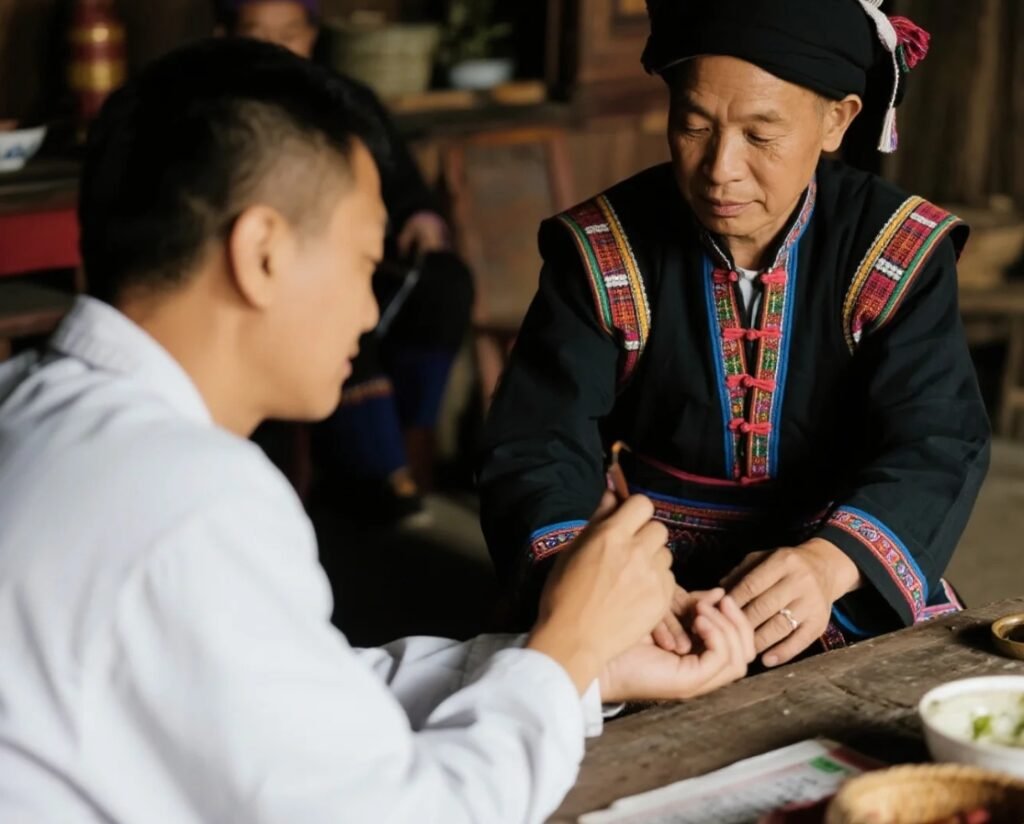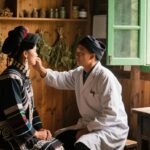Mongb ghab ghongd ngal (Tonsillar Discomfort)
Overview
In Miao medicine, this condition is referred to as Mongb ghab ghongd ngal. It is characterized by enlarged and inflamed tonsils, possible pus formation, and may be accompanied by cough, fever, and difficulty swallowing.
In traditional Chinese theory, this corresponds to the condition hou’e, which features severe throat pain, often radiating to the jaw or ears, with symptoms such as dryness, burning sensation, high fever, flushed face, thirst, and overall discomfort.
From a Western medical perspective, this aligns with acute or chronic tonsillitis. Acute cases begin suddenly, marked by severe sore throat and fever, along with fatigue and appetite loss. Chronic tonsillitis usually results from repeated infections, with ongoing throat discomfort, dryness, itching, mild cough, and halitosis.
Miao-Medicine Classification
This condition is classified as a minor disorder, divided into:
Heat-pattern tonsillar discomfort
Cold-pattern tonsillar discomfort
Causes
It is typically caused by wind toxins, heat toxins, or impure substances entering the body and invading the throat.
Pathogenesis
External toxins usually invade through the mouth, affecting the tonsils, damaging qi and blood. Over time, the accumulation of internal heat leads to inflammation. When internal fire becomes excessive, it consumes blood and flesh, resulting in pus formation, fever, and pain.

Diagnostic Criteria
1. Clinical Symptoms:
Severe sore throat, possibly radiating to the jaw or below the ears
Dry, burning throat sensation
Fever, headache, flushed face, thirst
General discomfort
2. Physical & Laboratory Findings:
Swollen, red, or pus-covered tonsils (white/yellow pseudomembrane)
Easily removable coating with minimal bleeding
Enlarged submandibular lymph nodes
Elevated white blood cells and streptococcus visible in throat swab
Differential Diagnosis
Laryngeal Abscess
While both conditions involve swollen throat and pain, laryngeal abscess typically presents with drooling, slurred speech, restricted mouth opening, and nasal discharge. On examination, there may be asymmetric swelling, uvular deviation, and absence of pseudomembrane. These features distinguish it from Mongb ghab ghongd ngal.
Pattern Differentiation and Herbal Support
1. Heat-pattern Tonsillar Discomfort
Symptoms:
Sudden chills and fever
Headache, severe throat pain, difficulty swallowing
High fever, dry mouth, halitosis
Tonsillar enlargement or pus
Yellow urine, dry stool
Meridian Affiliation:
Heat meridian disorder
Treatment Principles:
Clear heat and toxins
Reduce swelling and relieve discomfort
Herbal Formula:
Gynostemma Root (bazhaojinlong) – 15g
Gypsum (shengshigao) – 30g
Platycodon Root (jiegeng) – 10g
Silkworm (jiangcan) – 8g
Functions:
Gynostemma Root (bazhaojinlong): Clears throat heat, reduces swelling
Gypsum (shengshigao): Clears stomach fire
Platycodon Root (jiegeng): Opens lungs, relieves phlegm
Silkworm (jiangcan): Dispels wind, detoxifies
2. Cold-pattern Tonsillar Discomfort
Symptoms:
Mild tonsillar pain and dryness
Dry cough, bad breath, low-grade fever
Weak constitution, recurring symptoms
Meridian Affiliation:
Cold meridian disorder
Treatment Principles:
Nourish yin and qi
Improve circulation and reduce swelling
Herbal Formula:
Fig (wuhuaguo) – 20g
Honey (fengmi) – appropriate amount
Functions:
Fig (wuhuaguo): Reduces swelling, supports digestion, detoxifies
Honey (fengmi): Nourishes yin, replenishes deficiency
Preventive Care
Dress appropriately for the weather, avoid cold drafts
Maintain good oral hygiene and treat adjacent infections promptly
Exercise regularly to strengthen the immune system
Commentary
This condition can be contagious. Patients should rest, follow a light and gentle diet, and stay isolated if necessary. It is important to intervene early to manage inflammation and avoid complications.
In traditional therapy, herbal decoctions, rinsing, and acupuncture can help. In some cases, antibiotics may be required. If irreversible changes occur, tonsillectomy may be considered.


Leave a Reply